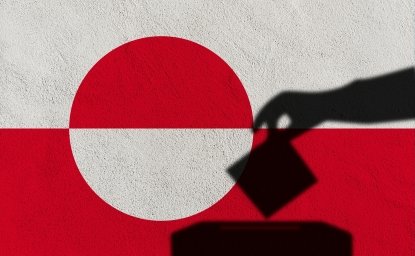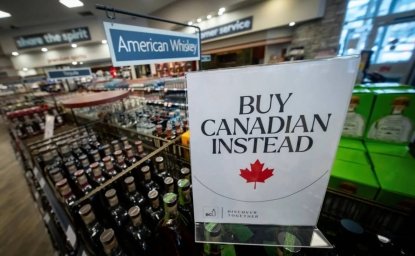The European Parliament elections took place from June 6-9 in all 27 EU member states. What were the results and what do they mean for the future work and impact of the European Parliament (EP)? Here are four key takeaways:
Right wing shift, also thanks to the surge in support for the far-right
The looming fear of a far-right wave across Europe did not materialize, but the polls correctly predicted a right wing shift. On the EU level, conservative and far-right parties were the only ones who gained support. The center right European People’s Party (EPP) solidified its position as the largest political group in the EP. Its member parties won elections in 13 member states. The clear victory of the Christian Democratic Union (CDU) in Germany is particularly significant, as it doubles down on the current Commission President (and former CDU politician) Ursula Von der Leyen’s claim to a second mandate as the head of the European Commission.
The far-right also saw both gains in seats and political victories in several member states. The biggest upset was in France with the far-right National Rally receiving 30% of the vote and in Italy, where Prime Minister Georgia Meloni’s populist Brothers of Italy solidified their governing role with 27%. With France in a domestic political crisis after President Emmanuel Macron unexpectedly called snap elections, Meloni could play a decisive role in shaping the next nominations for top positions in EU institutions.
A similar uptake in support for far-right parties happened in Austria and in Germany. In the latter, the Alternative for Germany (AfD), despite several recent controversies, came out ahead of all three government coalition parties.Taking second place nationally, its gains were most prominent in the East. In September, state elections will happen in Brandenburg, Saxony, and Thuringia, and AfD is currently leading the polls in all three states. In 2025, Germany will also hold national elections and coalition building might prove difficult.
The support for far-right parties in certain member states has not yet translated into a significant increase in numbers of seats for the two (far)-right wing political groups at the European Parliament level, ECR and ID. As of now they gained four and nine seats respectfully. However, 91 elected members are currently non-aligned and a number of them come from (far) right wing parties such as the Hungarian Fidesz or AfD—recently excluded from ID. These members might join the ranks of ECR and/or ID and with that boost their numbers, making ECR the third biggest political group.
The center-left is alive but not well
Not all parts of the EU witnessed a surge in support for far-right parties. In Finland, Greece, Spain, and Slovakia the center-left did better than expected, and in Denmark the Green Left party’s first place came as a surprise. The Socialist and Democrats group (S&D) therefore retained the position of the second largest political group in the EP.
However, the Greens and the liberal Renew are considered to be the biggest “losers” of the elections. Renew lost 23 seats, primarily due the poor performance of the French President Macron’s party that before represented their highest number of MEPs. This is a particularly heavy loss for Renew, which was considered to have the “kingmaker” role in the previous EP—providing the crucial votes to pass legislation. Support for the Greens was also significantly lower compared to 2019, especially in Germany, where they are a part of the ruling coalition. The right wing’s attempt to discredit EU climate policies to rally support for the elections appears to have resonated with the electorate beyond just the farmers. Consequently, the EU climate agenda might be very different (and less ambitious) in the future.
“Mortal” Macron
His recent speech at the Sorbonne did not help President Macron in increasing his ruling coalition’s chances of winning the elections. Receiving only 14%, Macron immediately after, and to the surprise of most, called for snap national parliamentary elections to be held in two rounds on June 30 and July 7. The rationale behind this decision continues to be a point of discussion. However, a similar result in support for the National Rally on the national level could leave France in a system of divided government called cohabitation. Since the start of the fifth French Republic this has only happened three times and could push French domestic politics into a crisis as well as affect its leadership role on the EU level. President Macron had, prior to the elections, floated the idea of nominating former Italian Prime Minister Mario Draghi for the next Commission President instead of Ursula von der Leyen. A distracted Macron could work in her favor, helping her to secure a second mandate.
Policy alliances will be tricky, as will the vote for the next Commission President
In the previous parliament, the center-right/left cooperation ensured the adoption of the Commission’s legislative proposals. How this will look in the next is less clear. Before the elections there was intense discussion of whether the EPP will potentially work with right-wing parties to see through its legislative priorities. The political group has been pivoting from the center towards the right, especially after the wave of farmers’ protests across Europe against current EU climate measures. Yet President von der Leyen has been skilfully ambivalent on a potential cooperation with the ECR.
In a 720 member parliament, the EPP, S&D, and Renew currently have a 406 member majority. However, members of these political groups are extremely diverse and it is not unusual for them to differ from the party line when voting on specific legislation. A more stable majority can be ensured by either including the Greens or the ECR—but these choices are diametrically opposed solutions. Crafting a stable majority will be crucial for the work of the parliament, but even more for confirming von der Leyen—if nominated—for her second mandate. Issues of support are also coming from her own party. To secure her reelection she will need to broaden her support. The EPP’s choice of partner will be the first indicator on whether the Parliament and Commission’s agenda will lean more right, especially on issues of migration, green transition and the next EU budget.
What Lies Ahead?
The EP will hold its constitutional session in July. In the meantime, the EU leaders will meet to adopt the Strategic Agenda 2024-2029 and discuss names for the top EU jobs. Frontrunners are considered to be the Estonian Prime Minister Kaja Kallas as the next head of EU foreign policy and former Portuguese Prime Minister Antonio Costa as European Council President. Both the current EP President Roberta Metsola and Commission President von der Leyen will most likely also stay in their positions. In September, the EP will vote on the new Commission President, followed by commissioner hearings and a confirmation vote of the next European Commission in December. While there was a surge of support for far-right parties in several EU member states, only the coming months will show how this will affect policymaking at the EU level.
Author


Global Europe Program
The Global Europe Program is focused on Europe’s capabilities, and how it engages on critical global issues. We investigate European approaches to critical global issues. We examine Europe’s relations with Russia and Eurasia, China and the Indo-Pacific, the Middle East and Africa. Our initiatives include “Ukraine in Europe”—an examination of what it will take to make Ukraine’s European future a reality. But we also examine the role of NATO, the European Union and the OSCE, Europe’s energy security, transatlantic trade disputes, and challenges to democracy. The Global Europe Program’s staff, scholars-in-residence, and Global Fellows participate in seminars, policy study groups, and international conferences to provide analytical recommendations to policy makers and the media. Read more

Explore More
Browse Insights & Analysis
Greenland’s New Governing Coalition Signals Consensus

The Future of France's Far-Right Party

Ukrainian Issue in Polish Elections

